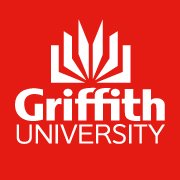Brief description
This data is set in a 36-bed residential rehabilitation facility, the Logan House, that operates as a therapeutic community. The aim of the program is to assist residents to make behavior and lifestyle changes that enhance their health and well-being. This includes, but is not limited to, ceasing substance misuse. The program is designed to encompass a 6-month stay, but shorter tailored programs can be negotiated.
Full description
Data collected during interviews from 152 clients who entered Logan House between March 2011 and April 2013. The ages of participants ranged from 20 to 64 years.Design and treatment;The study followed a prospective longitudinal design, with the social identity measures taken in the first week of treatment, at 2, 4, 6 weeks, at exit from the TC, and at follow-up planned for 6 months after they left the TC. There was some attrition at each time point, as is typical in TC treatment (e.g., Darke, Campbell, and Popple [2012] reported that 17% of treatment entrants dropped out in the first week, and only 34% successfully completed the treatment program). The number of participants at each assessment point was: 132 at entry, 92 at 2 weeks, 71 at 4 weeks, 54 at 6 weeks, 27 at exit from the TC, and 60 at follow-up. One reason for the low number at exit is that a substantial proportion of departures from the TC were unplanned and many occurred for rule violations (such as substance use while residing at the TC). This made it challenging for the researchers to obtain exit data in a majority of cases. The average length of stay at the TC was 99 days (SD = 76 days). Multiple attempts were made to contact every participant at the follow-up (an average of 7 months after leaving the TC) to ensure that the sub-sample was as representative as possible. A series of t-tests were conducted on demographic, substance use, and social identity variables at admission to the TC to investigate possible group differences between the subsample that were followed up (N = 60) and those who were lost to follow-up (N = 72). The t-tests showed no significance differences on substance-use history, well-being, or identity variables. The only significant difference was on years of education completed, which was higher in those included in the follow-up (M = 11.18, SD = 2.017) than in those lost to follow-up (M = 10.41, SD = 1.956). However, as both subsamples had an average of lower than secondary school education, and education was not included in any of the main analyses, this difference was not considered to have any influence on the findings and the follow-up subsample may be considered as representative of the original full sample.Procedure;Potential participants were identified by the manager of the TC when they were settled and ready to be interviewed, typically during their first week. They were then approached by a member of the research team and interviewed using the Addiction Severity Index, and then given a packet of questionnaires to complete and return. The researcher remained nearby to offer help if required. Participants were offered chocolates and cans of soft drink for completing each assessment point. The follow ups were conducted using contact details that the participants had given on their consent form. Follow-up surveys were conducted over the telephone (42%), in person (37%), and by mail (22%). Participants were reimbursed $30 for their completed follow ups. All measures and procedures were approved by the University Of Queensland Ethics Review Committee (approval #2011000953).
Notes
Demographic characteristics at entry to Logan House (divided into program graduates and non-graduates) Reasons for leaving Logan House Alcohol and drug use after leaving Logan House (past 30 days useage) Client perception of change in; physical health, mental health, substance use, and life in general at follow up (compared to before entry to Logan House) Scores on 21 item Depression Anxiety Stress Scale Scores on Adult Hope Scale at admission and exit from Logan House Scores on Satisfaction with Life Scale at Admission, Exit, and Follow Up Trauma and Posttraumatic Stress Symptoms Coping Skills Learned (Urge Specific Coping Skills questionnaire)
Data time period: 03 2011 to 30 04 2013
Spatial Coverage And Location
text: Our community service programs are delivered in locations throughout Queensland, with offices in Brisbane, Springwood, Caboolture, Gold Coast, Toowoomba, Dalby, Murgon, Kingaroy, Redcliffe, Longreach, Gladstone, Charters Towers, Ayr, Mareeba and Cairns.
User Contributed Tags
Login to tag this record with meaningful keywords to make it easier to discover


